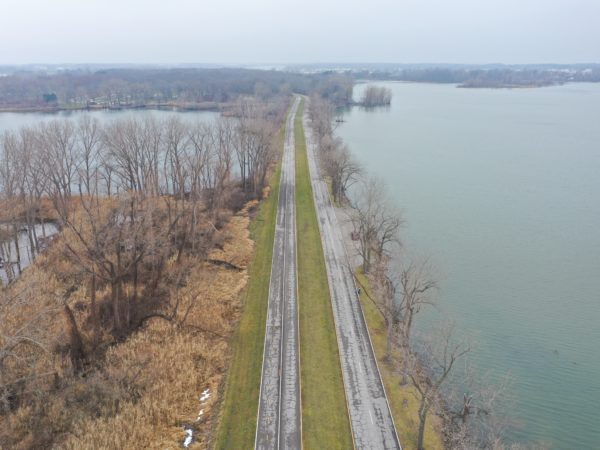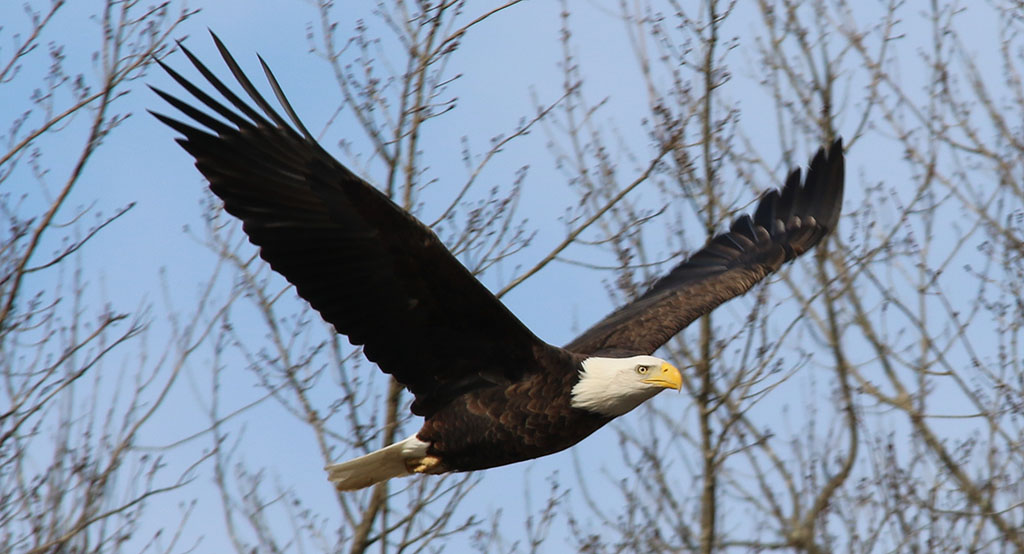
In 1979, there were just four nesting pairs of bald eagles in the entire state of Ohio. Today there are more than 900 pairs spread throughout all but three of Ohio’s 88 counties, not including the immature birds that still appear mottled with brown and white because haven’t yet developed white plumage on their heads.
For anyone wishing to get a gander at eagles and their nests in Ohio, counties bordering Sandusky Bay are the state’s hotspot for nesting pairs plus an uncounted juvenile population numbering well into the hundreds.
“I can definitely say that when eagles started coming back in the state through the 80s and early 90s we never expected to have this many so it’s really a success story and a sign of how adaptable they can be,” said Kelly Schott, education specialist at Magee Marsh Wildlife Area. “Obviously we have a lot of eagles along the Lake Erie shore here but they can be found all through Ohio now.”
The national symbol was once derided by Benjamin Franklin as a “…bird of bad moral character. He does not get his living honestly… is too lazy to fish for himself.” Franklin was not impressed at the eagle’s habit of stealing just-caught fish from other birds.
Eagles were devastated during the latter half of the 20th century after the synthetic pesticide DDT was made available for widespread use by farmers in the United States. Its entry into the food chain was later found to cause thin eggshells, which limited reproduction in eagles as well as other birds such as gulls, osprey, falcons and hawks. The newly formed U.S. Environmental Protection Agency banned DDT in 1972, beginning the wholesale recovery of eagles which had dwindled to just 417 nesting pairs in the lower 48 states by 1963.
After a 30-year stint on the federal Endangered Species List, eagles were downgraded to Threatened in 1996 then completely de-listed by the U.S Fish and Wildlife Service in 2007. Ohio still considered eagles threatened until 2012 when they were de-listed, however they still enjoy strict protections nationwide under the Migratory Bird Treaty Act and the Bald and Golden Eagle Protection Act.
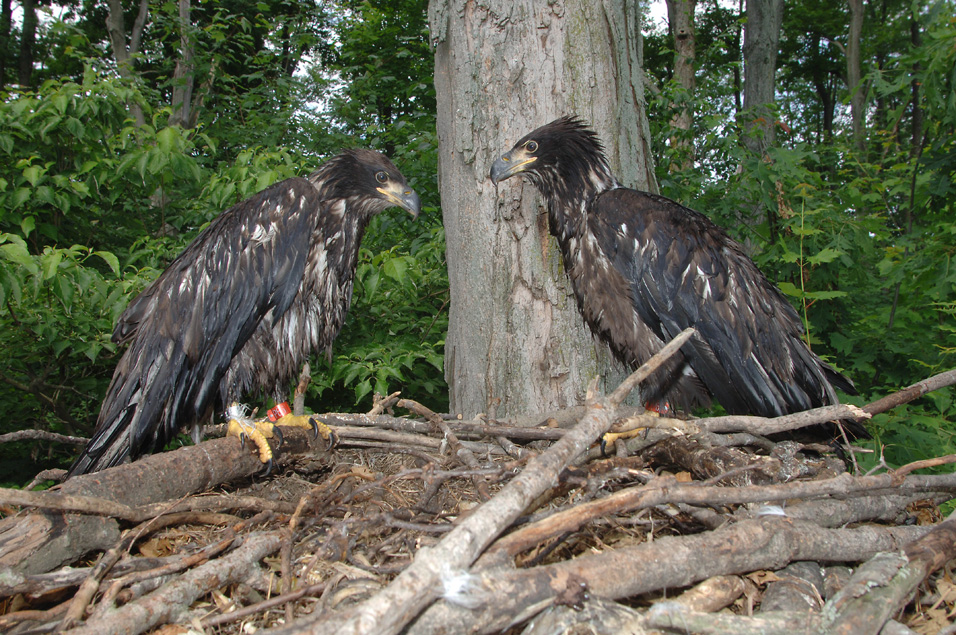
A pair of young eagles, both with leg bands. (Photo courtesy of ODNR)
Where can they be found in Ohio?
Eagles nest near large bodies of water including inland lakes and rivers. When searching for nests simply scan treetops for what appear to be large objects. Upon closer inspection with binoculars, a scope, or even the naked eye, you’ll see massive nests constructed of sticks, including many larger pieces several feet long. Nests can be six feet in diameter or more and just as deep. A nest near Vermilion, which came crashing down with the tree it was in during a storm in 1925, measured 8.5 feet in diameter, twelve feet tall and was estimated to weigh two tons.
Only three Ohio counties are without nests, according to an Ohio Department of Natural Resources’ 2020 survey. The rest have at least one nest, with most having three or more. About 18 counties support 10 or more nests, and just three counties — Ottawa, Sandusky and Erie, are home to nearly 20 percent of the state’s 900-plus nests, and the pairs that construct and inhabit them.
Although historically eagles have chosen nest sites in the largest trees in more remote locations, their real estate market has changed in recent years.
“I have noticed they seem to be more and more comfortable in areas with more and more people recently,” said Laura Kearns, an ODNR biologist who studies and helps keep tabs on the state’s population. “Now we’re now seeing more nests in urban areas and eagles building nests in peoples’ back yards. With more eagles on the landscape there’s more competition for suitable habitat and they’re adjusting and adapting, they’re really evolving to live in closer contact with people.”
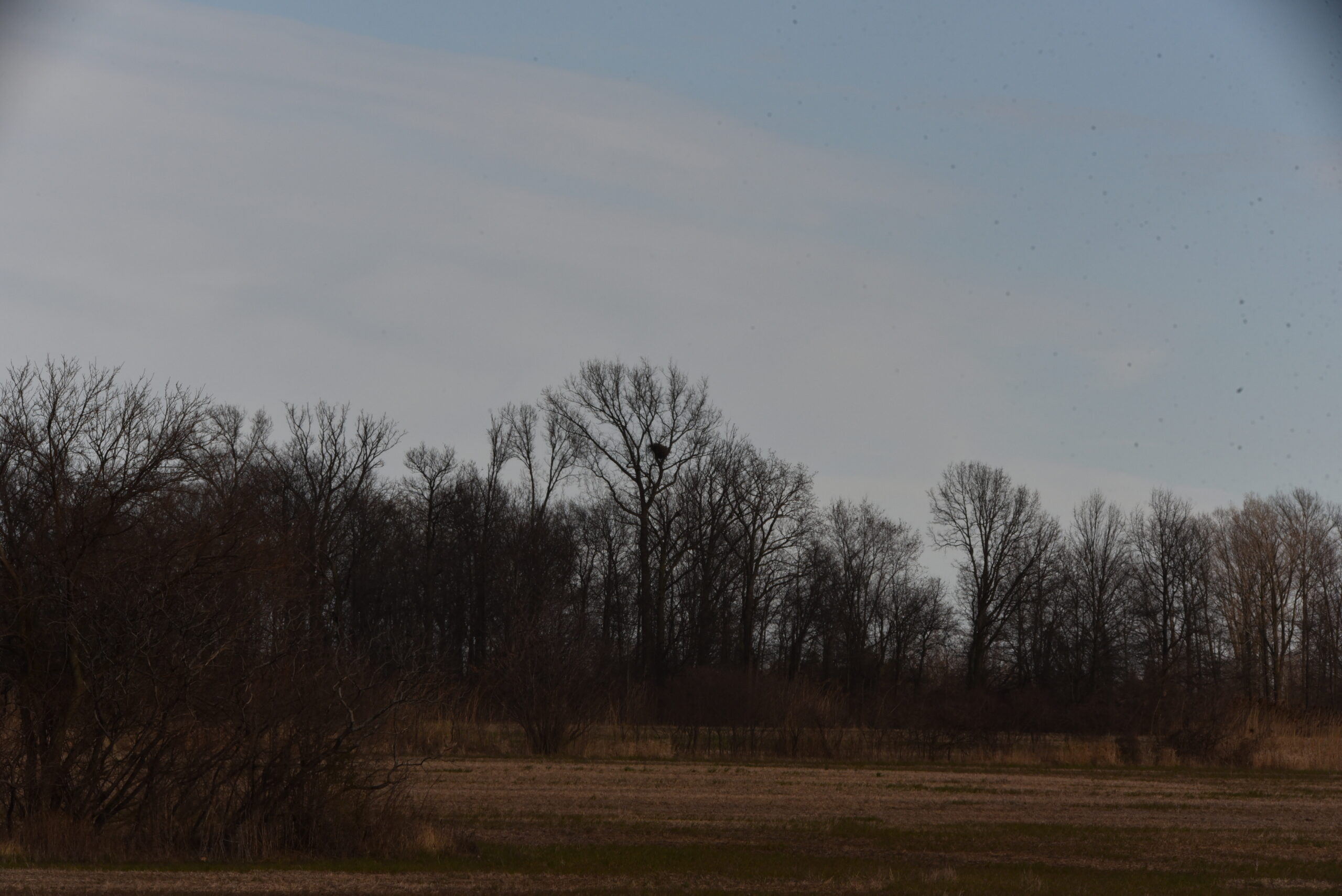
Locating eagle nests when foliage is not out is as easy as scanning treetops in the distance. (Photo by James Proffitt)
Rarer osprey and eagles not on good terms
Osprey, which may look similar to juvenile eagles at a distance, are significantly smaller with wingspans a foot or more shorter than eagles. However, they prefer the same areas for nest sites, the main requirement being large bodies of water. Unlike eagles which prefer live fish but will often eat roadkill, field carrion and dead fish — osprey almost exclusively eat live fish they catch in spectacular feet-first dives into water.
While eagles build almost exclusively in trees, osprey readily site their nests on manmade structures such as utility poles, communications towers and nesting platforms installed in marshes.
While Schott said she’s seen osprey in the region, they’re few in numbers compared to eagles. She cited a known pair of nesting osprey at the Resthaven Wildlife Area near Sandusky Bay as well as a rumored osprey nest constructed atop a cell phone tower just off of Ohio Route 2 west of Port Clinton. In Blausey and Darby marshes, also west of Port Clinton (both part of the Ottawa National Wildlife Refuge), two different nesting platforms erected for osprey have been used consistently during the past decade and have hosted successful hatches of osprey chicks over the years.
Rising population means more fatalities
Although DDT no longer threatens bald eagles and other birds, more eagles are being killed each year — a problem that often can’t be avoided. These mortalities are due to lead poisoning from fishing tackle and shotgun hunting (considered a national issue), this is not an issue that’s easily trackable, Kearns explained, because birds that succumb to it are often never found. The same thing with birds that die from avian flu infections. But collisions are hard on eagle populations — especially younger birds, which haven’t fully honed their hunting skills yet.
“Vehicle collisions are a concern because they do feed on carrion, especially immature eagles feeding on roadkill and they just aren’t aware of vehicles and so unfortunately a lot of eagles get hit on the road,” said Kearns. “We also have some eagles colliding with power lines, especially in a state like Ohio where we have so many people and structures and roads.”
In the Mississippi flyway alone, which Ohio is a part of, there are currently well over 160,000 eagles, Kearns said. Tens of thousands of those birds are juveniles.
Schott said at Pickerel Creek last winter she saw an astounding number of eagles in a single location.
“I can tell you there are immatures everywhere. I counted between matures and immatures, 28 eagles in a span of about 100 feet on the tree line,” said Schott, going on to say they were hunkering down against a strong north or west wind. “It was pretty neat.”
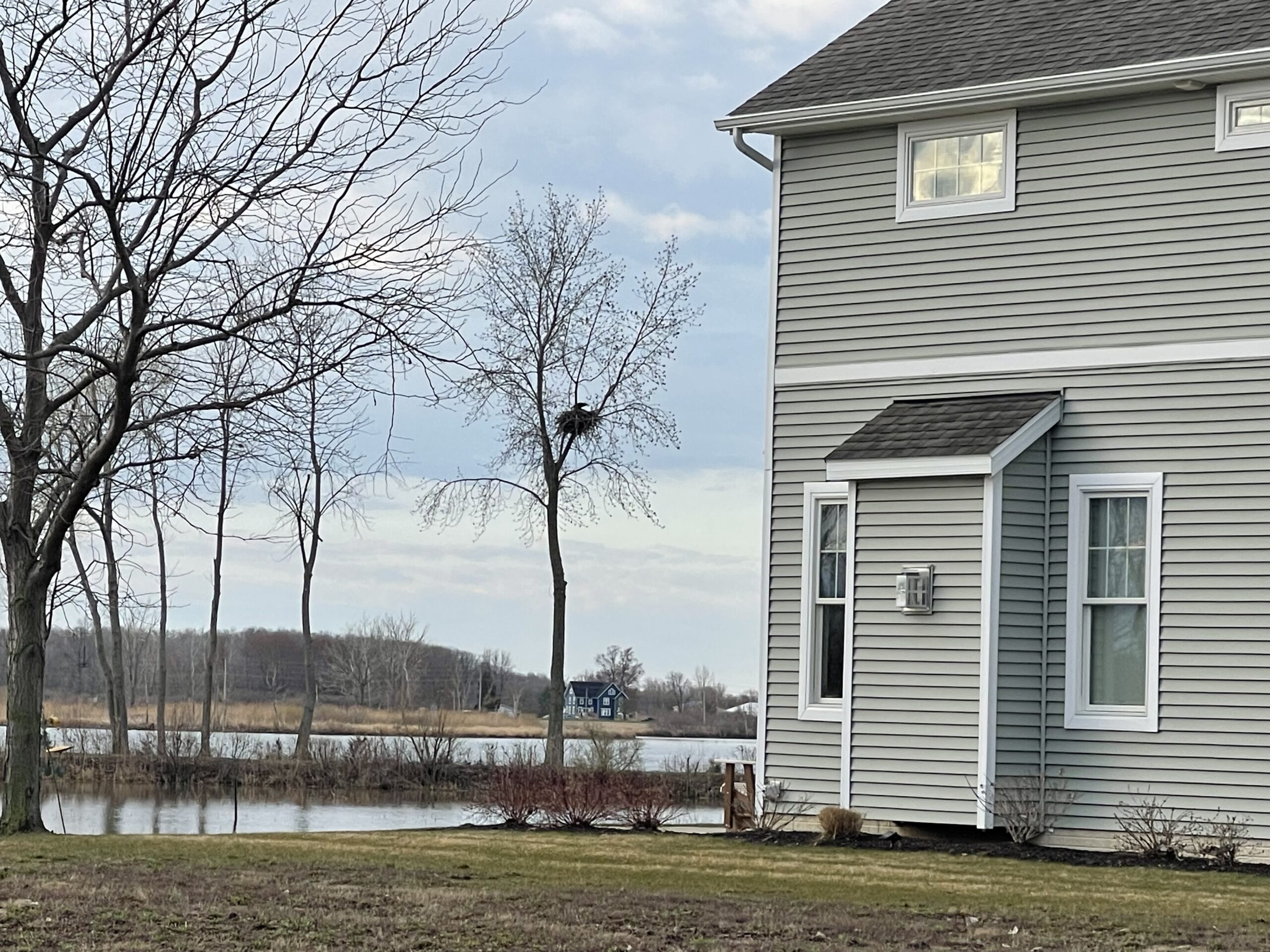
Eagles are constructing nests closer to people in recent years — including in the midst of subdivisions. (Photo by James Proffitt)
A generational divide
“I would honestly agree the older generation always seems to be more excited to see an eagle,” Schott said. “Most of the people I speak to really want to see an eagle’s nest and most of the inquiries I get are from the older generation. I had a grandpa in here the other day and he had his grandson with him and he told his grandson ‘When I was a kid we didn’t get to see eagles.’”
On World Migratory Bird Day May 11, the visitor center will host Back to the Wild, a local wildlife rehabilitation operation that offers up-close-and-personal views of eagles, raptors and other creatures, always a favorite of Biggest Week in American Birding attendees.
One of the center’s permanent displays is a mature eagle with eaglets and a separate display with an immature eagle. She said coloring activities for kids help show how white plumage on the heads progress with age.
Good places to find eagles in Ohio
Old Woman Creek State Nature Preserve
Ottawa National Wildlife Refuge
Entire Lake Erie shoreline
Major rivers like Great Miami, Muskingum, Scioto and Hocking
Catch more news at Great Lakes Now:
From the Ice Age to Now: A Lake Erie timeline
Where to see rare solar eclipse in Ohio
Featured image: An adult eagle. (Photo courtesy of ODNR)


